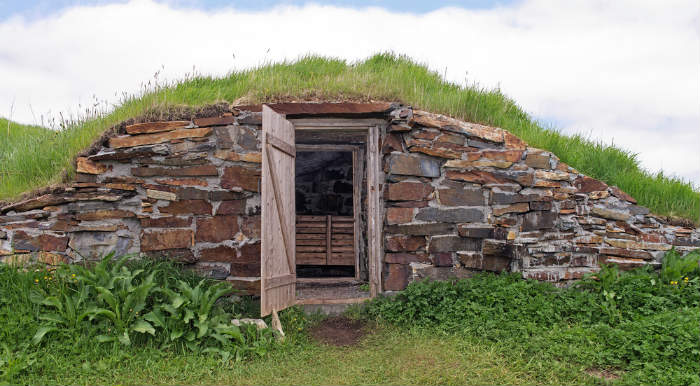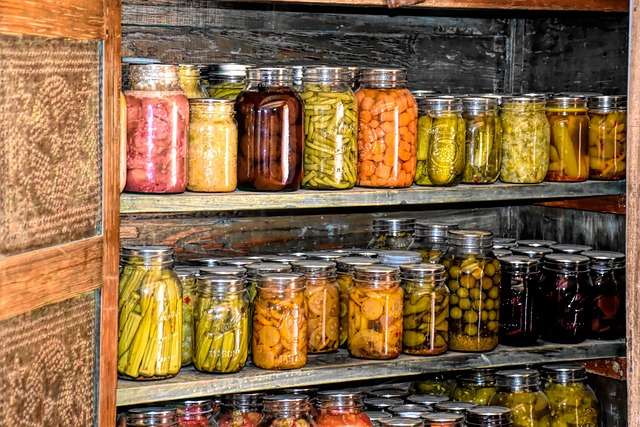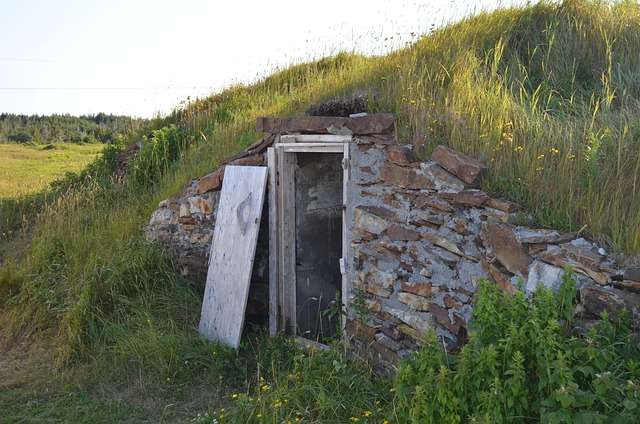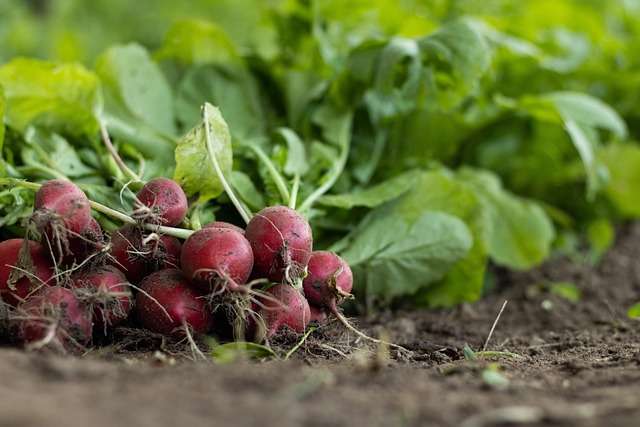Root Cellars – Why We All Need One

Make sure to like Living Green and Frugally on Facebook, Shop at Amazon to help support my site and explore our PINTEREST BOARDS for innovative ways you can become self-sufficient.
By paying close attention to the crop varieties you choose, your timing for harvest and the best storage conditions for each type of fruit or vegetable, you’ll be able to enjoy the taste of summer well into winter with the help of a root cellar. If you are looking to build a root celler here is a great article i did a few months ago that you all loved – How To Build A Root Cellar
In an age of convenience and modern technology, it’s easy to overlook the wisdom of traditional methods for food preservation. Yet, as concerns about food security, sustainability, and self-sufficiency grow, there’s a resurgence of interest in time-tested practices.
One such practice is the humble root cellar – an ancient yet remarkably effective means of storing fruits, vegetables, and other perishables. In this article, we’ll delve into the world of root cellars, exploring their purpose, benefits, requirements, types, and how they work to keep your produce fresh year-round.
Understanding Root Cellars:
A root cellar is a simple underground storage space designed to maintain low temperatures and high humidity levels, ideal for preserving perishable food items. While modern refrigeration has largely replaced root cellars in many urban areas, they remain invaluable for rural communities, homesteaders, and anyone seeking sustainable living practices.

Why We All Need One:
- Preserving Harvests: A root cellar enables you to extend the shelf life of your garden’s bounty, allowing you to enjoy fresh produce long after the growing season ends.
- Reducing Food Waste: With proper storage conditions, fruits and vegetables stay fresh for months, reducing the likelihood of spoilage and waste.
- Promoting Self-Sufficiency: By preserving your own food, you’re less reliant on commercial supply chains, fostering greater self-sufficiency and resilience.
- Energy Efficiency: Unlike refrigeration units, root cellars require minimal energy inputs, making them a sustainable and cost-effective storage solution.
Root Cellar Requirements:
- Location: Ideally, a root cellar should be situated underground or partially buried to capitalize on the insulating properties of soil. It should also be placed away from trees to prevent root damage and in an area with good drainage to avoid flooding.
- Temperature and Humidity Control: The optimal temperature for a root cellar ranges from 32°F to 40°F (0°C to 4.4°C), with humidity levels around 85-95%. Ventilation is crucial to regulate these conditions and prevent the buildup of excess moisture.
- Insulation: Proper insulation, typically achieved through earth berms, straw, or other natural materials, helps maintain a stable internal temperature and protects against temperature fluctuations.
- Air Circulation: Adequate airflow is essential for preventing mold and spoilage. Ventilation systems, vents, or air ducts facilitate the exchange of air, promoting freshness and minimizing odors.

Types of Root Cellars:
- Traditional Underground Cellars: Dug directly into the earth, these cellars benefit from natural insulation and are typically accessed via a staircase or trapdoor.
- Walk-In Basements: Basements can be repurposed as root cellars, providing convenient access and ample space for storage.
- Buried Barrels or Containers: Large barrels or containers buried underground offer a makeshift yet effective alternative for those lacking dedicated cellar space.
- Cooled Root Cellars: Some modern root cellars incorporate cooling systems powered by electricity, solar energy, or geothermal heat, enhancing temperature control in regions with extreme climates.
How They Stay Cool:
The cooling mechanism of a root cellar relies on several factors:
- Insulation: Earth, being a natural insulator, helps maintain a stable temperature within the cellar, shielding it from external heat fluctuations.
- Thermal Mass: The mass of soil, concrete, or other materials surrounding the cellar absorbs and retains coolness, buffering against temperature variations.
- Ventilation: Air circulation promotes evaporation and heat exchange, cooling the cellar naturally. Ventilation shafts or vents facilitate the movement of air, preventing stagnation and mold growth.
- Geothermal Cooling: In regions with consistent underground temperatures, geothermal energy can be harnessed to regulate the cellar’s climate efficiently.

Tips for Storing Your Harvest:
- Harvest at the Right Time: To maximize freshness and storage life, harvest fruits and vegetables at their peak ripeness. Avoid picking produce when it’s overly ripe or damaged, as it won’t store well.
- Handle with Care: Handle harvested items gently to minimize bruising and damage, which can accelerate spoilage. Remove any excess soil or debris, but avoid washing fruits and vegetables before storage to prevent premature decay.
- Sort and Inspect: Before storing, carefully inspect each item for signs of damage, rot, or disease. Discard any spoiled or compromised produce to prevent contamination of the entire batch.
- Optimal Conditions: Different fruits and vegetables have varying storage requirements. Research the ideal temperature, humidity, and ventilation needs for each type of produce and adjust your root cellar accordingly.
- Root Crop Preparation: Remove tops and foliage from root crops like carrots, beets, and potatoes before storing. This helps prevent moisture loss and inhibits the growth of mold or bacteria.
- Layering and Packing: Arrange produce in the root cellar in a single layer whenever possible to facilitate air circulation and prevent crushing. Avoid overcrowding, as it can lead to moisture buildup and accelerated spoilage.
- Monitor Regularly: Check stored produce regularly for signs of spoilage or decay. Remove any items showing deterioration to prevent it from spreading to other produce.
- Rotation: Practice a first-in, first-out approach to ensure that older items are used before fresher ones. Regularly rotate your stock to minimize waste and maintain optimal freshness.
- Consider Ripening Needs: Some fruits and vegetables continue to ripen after harvest. Separate items that emit ethylene gas, such as apples and tomatoes, from those sensitive to it, like potatoes and carrots, to prevent premature ripening or spoilage.
- Adapt to Seasonal Changes: Adjust storage conditions as outdoor temperatures fluctuate throughout the year. Insulate or ventilate the root cellar accordingly to maintain consistent temperature and humidity levels.
By following these tips and incorporating best practices into your harvesting and storage routine, you can maximize the longevity and quality of your homegrown produce in your root cellar, ensuring a bountiful and sustainable food supply for months to come.
Conclusion:
Root cellars may seem like relics of a bygone era, but their practicality and efficiency endure as timeless solutions for preserving food and fostering self-reliance. Whether you’re a seasoned gardener, a homesteader, or simply someone passionate about sustainability, incorporating a root cellar into your lifestyle can revolutionize how you approach food storage and consumption.
In an uncertain world where food security is paramount, the humble root cellar stands as a beacon of resilience, offering a glimpse into a more sustainable and self-sufficient future.